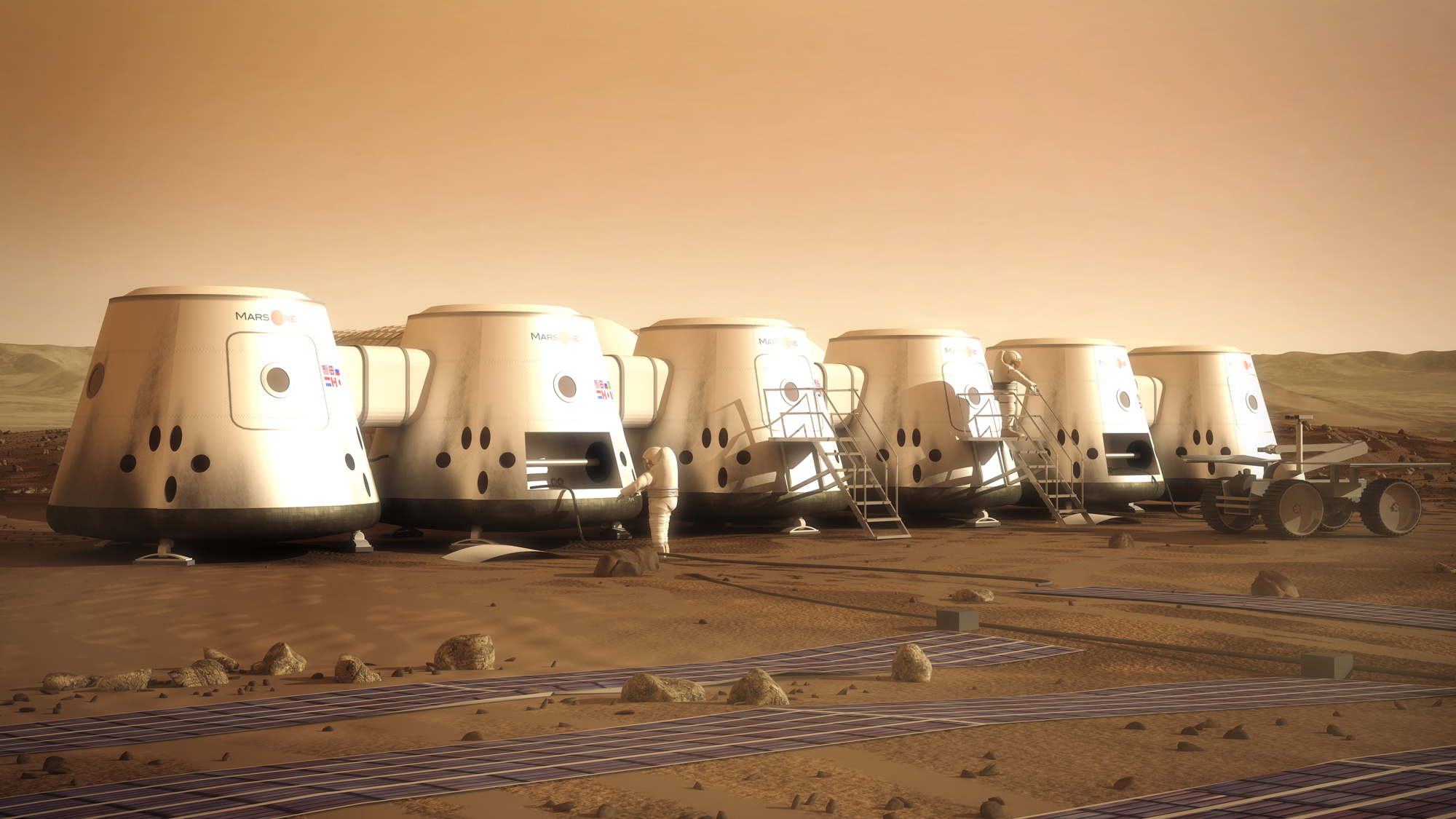
Landing astronauts on Mars is a tall order, but bringing them back to Earth promises to be even trickier — especially if Red Planet explorers get the sniffles on the long flight home.
Sick astronauts could conceivably have been infected on Mars, some parts of which may be capable of supporting life as we know it. So the world may be reluctant to welcome such travelers home, leery of possibly unleashing an extraterrestrial superplague on Earth's 7 billion people.
NASA is already thinking about how to deal with this concern as it works toward getting people to the vicinity of Mars by the mid-2030s. The key is to monitor the health of astronauts meticulously during all phases of Red Planet missions and any other deep-space efforts, said Cassie Conley, NASA's planetary protection officer. [The Boldest Mars Missions in History]
"The ability to have documentation to justify to the rest of the Earth why this really isn't some nasty disease from Mars, it's actually something totally normal and we expected it — we saw it when we went to the moon, we saw it when we went to asteroids, we know this is a result of nonliving exposure, it has nothing to do with some potentially Martian disease — that, I think, is going to be the most important aspect of doing planetary protection on human missions [to Mars]," Conley said last month during a presentation with NASA's Future In-Space Operations working group.
Of course, NASA will also be doing its best to minimize the chances that astronauts could pick up a potentially pathogenic Martian organism while roaming the surface. For example, human explorers will steer clear of "special regions" — defined as areas where Earth microbes could likely survive and reproduce — and they won't set foot in a Martian locale that hasn't been visited and vetted by a robot first.
These and other guidelines are laid out in a rough planetary protection protocol drawn up in 2008 by the Committee on Space Research (COSPAR), which is part of the International Council for Science. NASA and the European Space Agency have committed to follow this protocol, whose top priority is to protect Earth from any possible "back contamination" from Mars. (The policy seeks to safeguard the Red Planet against "forward contamination" from Earth as well.)
But astronauts on the surface will inevitably come into contact with some Martian material no matter what precautions mission planners devise, Conley and other experts say, potentially lending a sinister edge to the slightest sneeze or cough.
Get the Space.com Newsletter
Breaking space news, the latest updates on rocket launches, skywatching events and more!
And Red Planet explorers are highly likely to get sick.
"They're going to have runny noses, they're going to have some skin rash," Conley said. "People who are in a small, contained environment for hundreds of days — that happens to them."
Astronauts should assiduously track the nature and severity of these various illnesses as part of their concerted health-monitoring efforts, she added, with one crewmember assuming primary responsibility for implementing planetary protection protocols throughout the entire mission.
NASA's working plan also calls for quarantine capabilities and appropriate medical testing to be provided to crews returning from Mars — and for everyone associated with any manned Red Planet mission to keep things in the proper perspective.
"Six people going on a mission to Mars — if something happens to them, that's a really bad tragedy and we want to prevent that as much as possible," Conley said. "But six people bringing some horribly infectious, horribly damaging organisms back from Mars to Earth is a global tragedy, and there is a difference in scale there that has to be recognized."
Follow Mike Wall on Twitter @michaeldwall and Google+. Follow us @Spacedotcom, Facebook or Google+. Originally published on SPACE.com.
Join our Space Forums to keep talking space on the latest missions, night sky and more! And if you have a news tip, correction or comment, let us know at: community@space.com.

Michael Wall is a Senior Space Writer with Space.com and joined the team in 2010. He primarily covers exoplanets, spaceflight and military space, but has been known to dabble in the space art beat. His book about the search for alien life, "Out There," was published on Nov. 13, 2018. Before becoming a science writer, Michael worked as a herpetologist and wildlife biologist. He has a Ph.D. in evolutionary biology from the University of Sydney, Australia, a bachelor's degree from the University of Arizona, and a graduate certificate in science writing from the University of California, Santa Cruz. To find out what his latest project is, you can follow Michael on Twitter.









